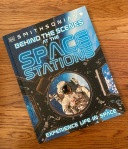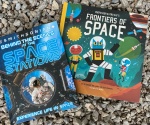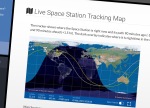Neither snow nor rain nor blistering Texas heat and screaming cicadas nor gloom of night nor Christmas nor somebody’s birthday prevents us Cool School scholars from stories and studies every single night. This learning hour is so uplifting and when I sign off “Welcome to the best part of my day”, I mean it. High points from the past few weeks –
Reading Comprehension: Clem and Clyde style – Our current reading comprehension endeavor (a one page sheet, once a week) focuses upon two free-spirited lads, Clem and Clyde, who sneak aboard trains and crisscross the USA. My son independently reads the few short paragraphs and answers follow-up questions about Clem and Clyde’s gripping escapades (involving the likes of a popcorn factory, a cement potato, clown shoes). So far, A+: this is the type of thing my son likes to read and this is the type of thing I like to write.
Keyboard Practicing – Three times a week I give my son a list of 6 rhyming words (for the repetition of letters)(the list is different every session). I support his wrist as he types out the words on the iPad. Words like: rain – main – drain – plain – train – brain
Then I release my son’s wrist and it is time for him to press alphabet letters without support. This is so far out of his comfort zone, but he has nailed “a”, “b”, and now, “c”. This is huge progress!
Space Station Quiz – My son and I (BOTH) learned something crazy-interesting from every single page of the Smithsonian “Behind the Scenes at the Space Stations” book, published in 2022 (so quite up to date). We concluded with a 10 question quiz for which my son scored 100% and my UCLA roomie (so ya know she’s smart) from way back, scored 20%. Here are 5 of the questions: (answers at bottom of post)
1). How many times does the International Space Station orbit Earth in a 24 hour period?
a) 2 times b) 5 times c) 10 times d) 16 times
2) “Tiangong” (the Chinese Space Station) is translated:
a) celestial palace b) high in the sky c) beautiful view d) our future
3) How much preparation goes into a space walk?
a) no preparation is needed b) 24 hours c) 4 days d) 2 weeks
4) How long does it take from lift-off for a rocket to reach space?
a) 5 minutes b) 9 minutes c) 23 minutes d) 2 hours
5) Space agencies involved with the ISS are supporting the endeavor through:
a) 2024 b) 2028 c) 2030 d) 2050
Kindness Lesson – My son just finished his 80th volunteer day at a local garden center and was gifted a sweet house plant, with all 9 employees signing the clay pot. I am not sure this meant much to my son, but the gesture melted my heart. This nursery is a haven of tolerance, accommodation, and kindness.
Recently completed books and topics – trees, Spain, countries that use the Euro as their currency (Spain being one), and “Prince Caspian” (a sequel to “The Lion, the Witch, and the Wardrobe”).
Story Problem from the Local Diner – The local diner is celebrating the sweltering days of summer with a root beer float promotion. For the month of August, the floats (showcasing the diner’s house-made vanilla ice cream) will sell for $2 each, instead of the regular price of $3 each. The cost of making a root beer float is $1.
If the diner sells 150 root beer floats in August and sold 90 floats in July, which month showed the larger profit? Was this promotion a genius idea, from a financial point of view? (answers at bottom of post)
Classical Music for Soothing Summer Sounds –
Fireflies – a movement from Amy Beach’s suite for piano, “Four Sketches”, composed in 1892. FYI, Ms. Beach is recognized as being the first successful American female composer. My son and I reserve this sparkling piece for summer listening only. Summer Soother Rating: 5 stars out of 5 stars –
Suite Populaire Brésilienne, movement 1 (the Mazurka-Chôro), composed by Heitor Villa-Lobos in 1928. This is a relatively new piece for us: a tender melody that alternates between pensiveness and hopefulness, played by classical guitar virtuoso, Pepe Romero. Summer Soother Rating: 5 stars out of 5 stars –
Sailing By, Ronald Binge, 1963. This relaxing piece is broadcast via BBC Radio 4 before the late shipping report. I think we have listened to this at least 300 times over the past 10 years. We want to be on this boat. Summer Soother Rating: 5 stars out of 5 stars –
Welcome to the best part of my day!
– Jane BH
(Space Station Quiz answers: 1) d. 16 times, 2) a. celestial palace, 3) d. 2 weeks, 4) b. 9 minutes, 5) a. 2024)
(Local Diner story problem answers: July showed the larger profit. This was not a super smart promotion from a financial point of view)











